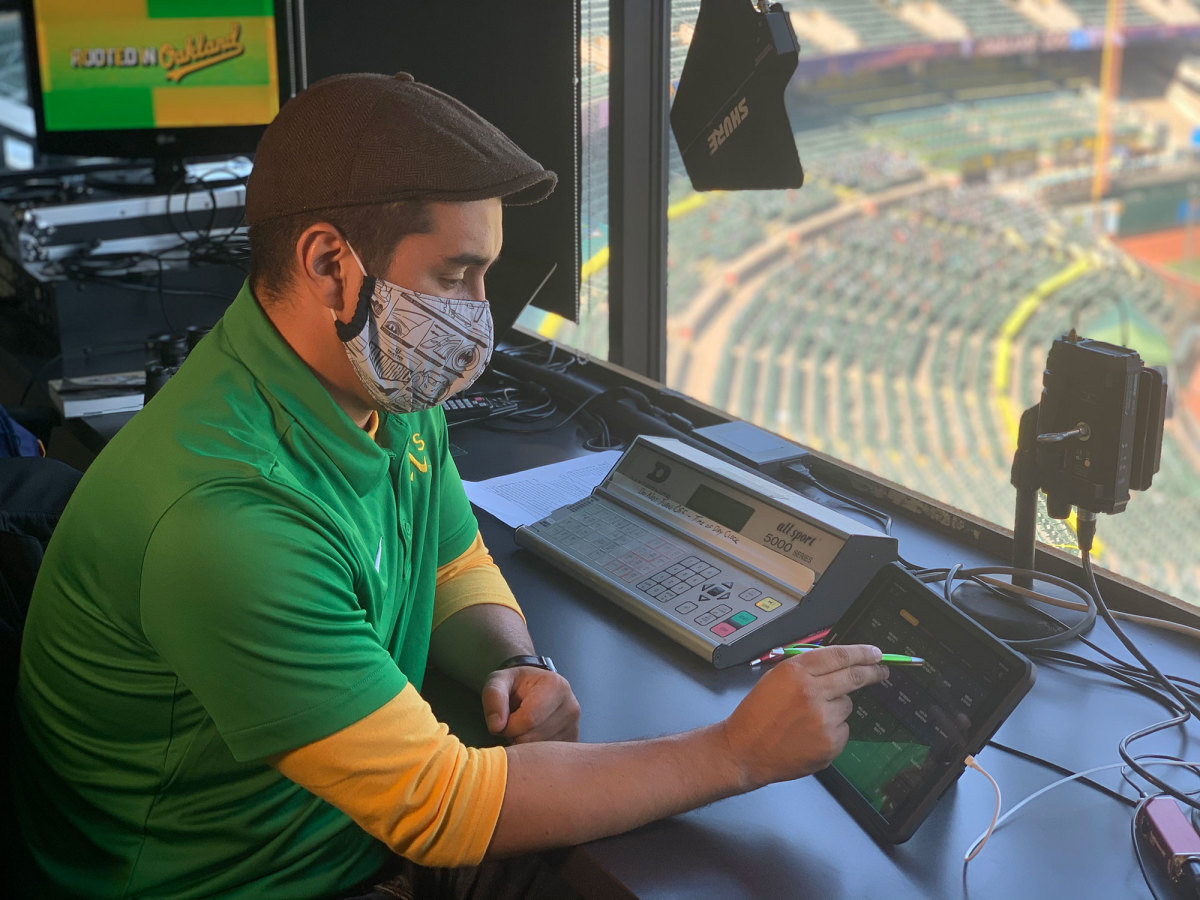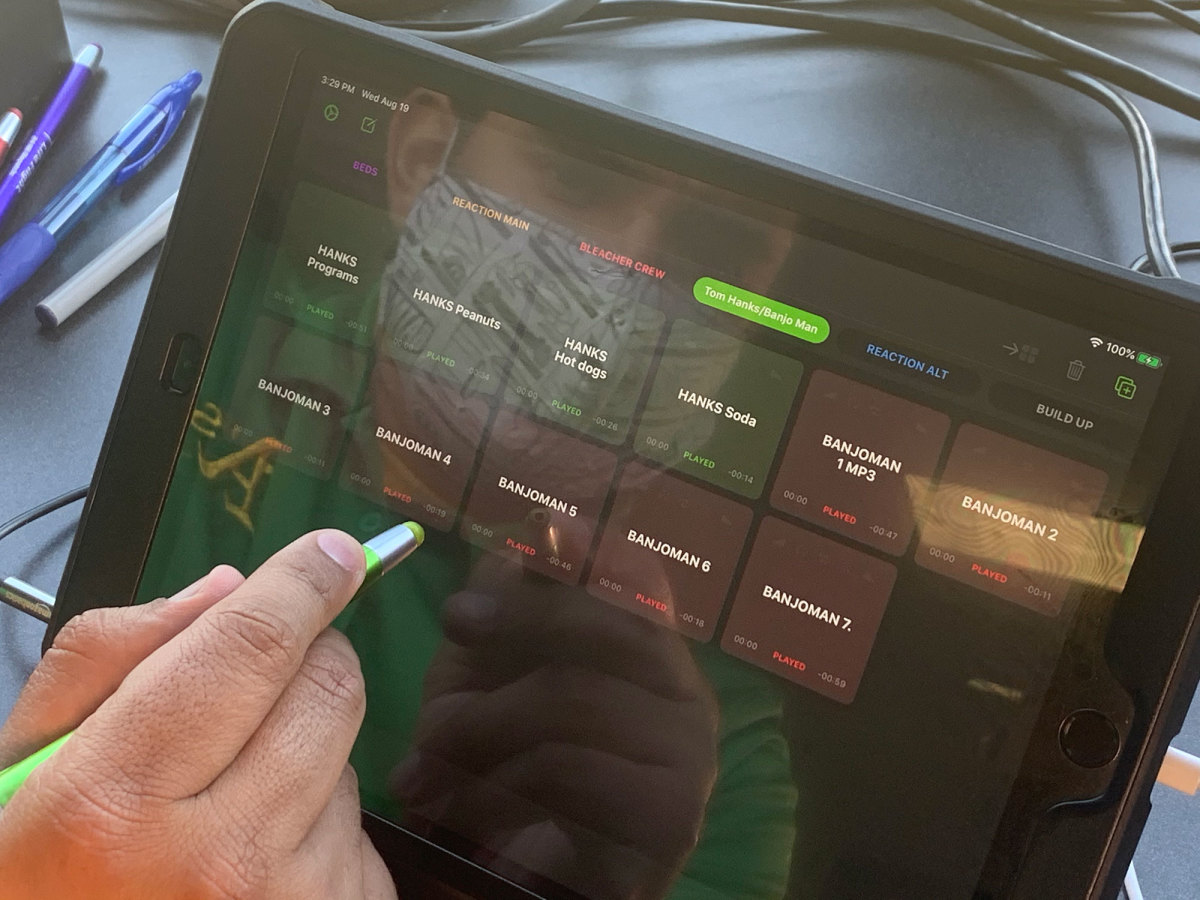What's Behind MLB's Fake Crowd Noise? A Conductor With an iPad

When MLB settled on its structure for coronavirus gameplay—in home stadiums but without fans—it knew it would need to provide a remedy for the unnatural quiet of empty ballparks.
The league found its answer in the form of 30 iPads, one for each team, loaded with various crowd reactions so that a little tapping and scrolling was all it took to play the proper noises. But an artificial crowd is as an art as much as it is a science. And it’s harder than it looks (or sounds).
“You’re a conductor of sorts,” says Oakland A’s executive producer for ballpark entertainment Amelia Schimmel. “You’re controlling a symphony.”
The crowd noise is crucial to producing an environment that seems, if not normal, then at least normal-ish. It’s important for the players, who aren’t used to performing in dead silence. It’s important for the managers, who don’t want their conversations overheard in the opposing dugout. And it’s important for the broadcasters, who want to create a familiar experience for those watching at home. But normal-ish crowd noise is difficult to approximate—a sea of sound that changes with each pitch.
Think about all the sounds you hear at the ballpark, says Seattle Mariners senior director of productions Ben Mertens. Each game starts with a typical crowd murmur that works as background noise for the whole evening. But even a feature as basic as that murmur is variable—it’s slightly louder when the home team is at bat, and even louder if the game is particularly close, or in the later innings. The stadium crew is constantly adjusting this background noise. And then they get into the work of producing reactions to specific plays.

“You have that base level noise that you’re working with,” Mertens says, “And then on top of that, you start layering other effects.”
He gives an example of a Mariners player making hard contact. “There’s that initial reaction of the ball hitting the bat,” he says, but that’s not a full-throated cheer, because the crowd wouldn’t know if it’s going to be a home run or a foul or a ball that dies in the outfield. So the stadium will layer an anticipatory ohhh on top of the basic murmur. (There is no limit to the number of different sounds that can be layered on at one time.) As the ball carries farther and farther, that anticipatory noise will get louder, perhaps with a few yells mixed in. And when it lands, the tablet operator will have to adjust the sound in an instant, peeling off all the layers to switch to a sound of disappointment if the ball is robbed on the track, or ramping them up with cheers to celebrate a home run.
It’s difficult. Not least because no one has ever had to do it before.
“’When exactly does the noise level elevate when our offense is threatening?’ and 'What does a run scored sound like when it’s off a base hit compared to a sac fly?’ are questions we never really needed to ask ourselves until this season,” Milwaukee Brewers senior vice president of brand experience Teddy Werner wrote in an email.
Before the start of the season, Milwaukee’s sound crew watched a few games from last year with the crowd noise isolated, in order to have a better sense of how fans reacted to actual situations. Seattle’s operators, meanwhile, took turns bringing the tablet home to try practicing their crowd noise with old games played on mute. While everyone in these jobs is used to paying close attention to the sounds of the stadium—in a typical season, they would be the people organizing the music, or managing details on the scoreboard—this was completely new.
Part of the trick comes from the fact that stadiums are trying to mimic the noises of an actual crowd. That's a bit different than an ideal crowd.
“When you see a fly ball that’s clearly not going out for a home run, but everybody does that oooh? That still has to happen,” says the A’s Schimmel. “Because we’re not trying to make it sound just like how we’d want it to sound. We’re trying to make it sound real.”

The end result of all those layered noises is somewhere north of 1,000 individual sounds per game in Oakland, Schimmel estimates. (It's common to have several different ones layered for each at-bat, she notes, as they try to adjust the background murmur a bit for every individual pitch in the count.) “It’s almost like playing the piano,” she says, with some buttons pressed together like chords and others on their own, all blended into one greater body of sound.
But the crew has more to consider than the sounds themselves. There’s also the overall noise level—which has to work for both the team in the stadium and the fans at home with the broadcast.
“First, we heard from our baseball department that they thought it was too loud, so we brought it down,” says Colorado Rockies senior director of in-game entertainment and broadcasting Kent Krosbakken. “And then it was a little bit too low for TV. But we found a happy medium.”
The dozens of sounds that came loaded on the tablet for each team were originally made for the PlayStation game MLB: The Show. Each noise has three levels—small, medium, and large—and layering can create additional ones. (An extra-loud cheer can be done by playing all three levels at once.) And teams can choose to customize the program with noises of their own, too. The A’s, for instance, added a recording of their super-fan The Banjo Man. The Brewers remixed some of the sounds to fade in and out more gradually.
It's little touches like that can make a difference. And, of course, nothing beats the simple act of paying attention.
“That’s what’s going to make it the most believable for the fans at home,” Krosbakken says. “It’s not just reacting on the big plays, but it’s the little things, like a throw over to first. That really sets the tone for the broadcast.”
